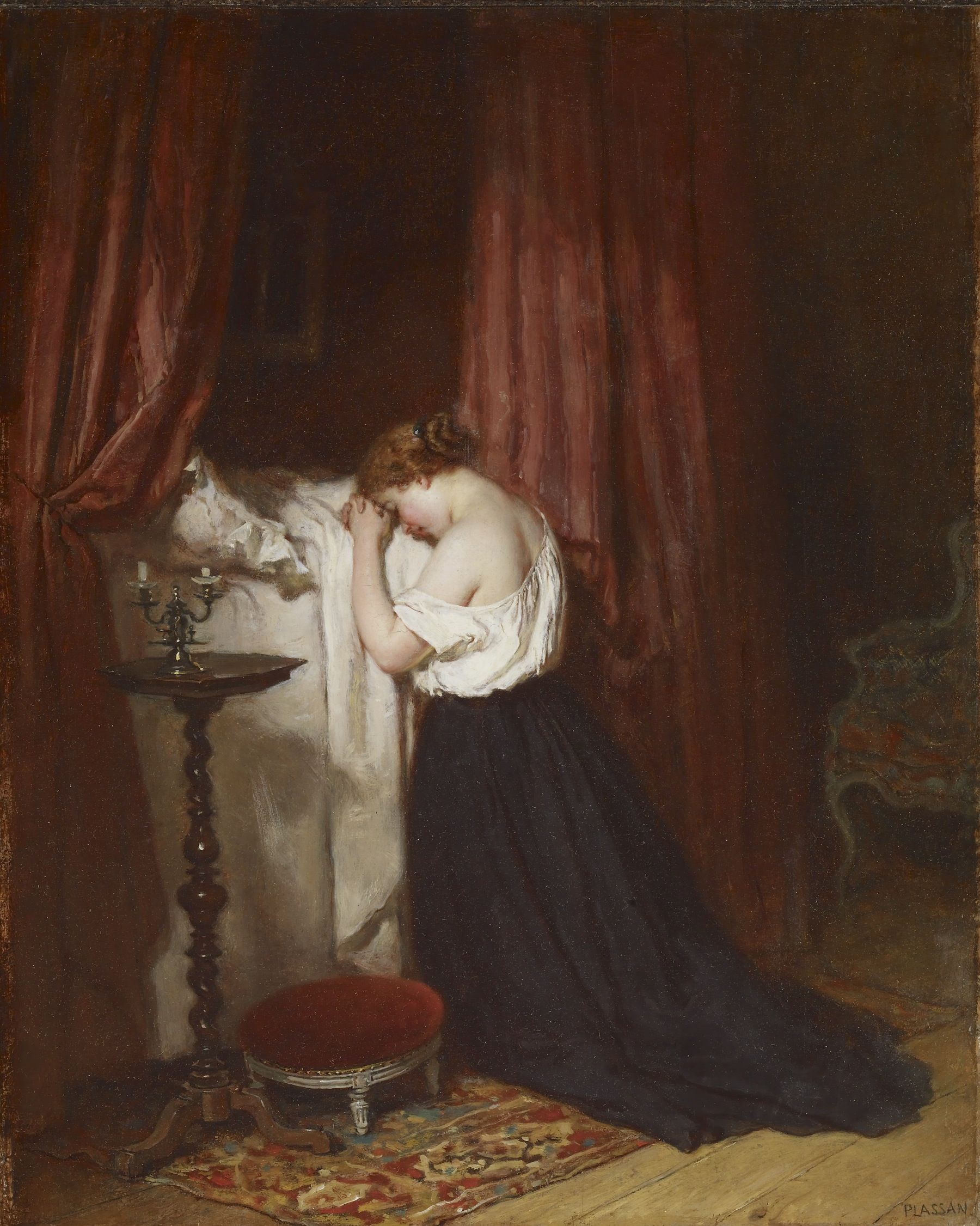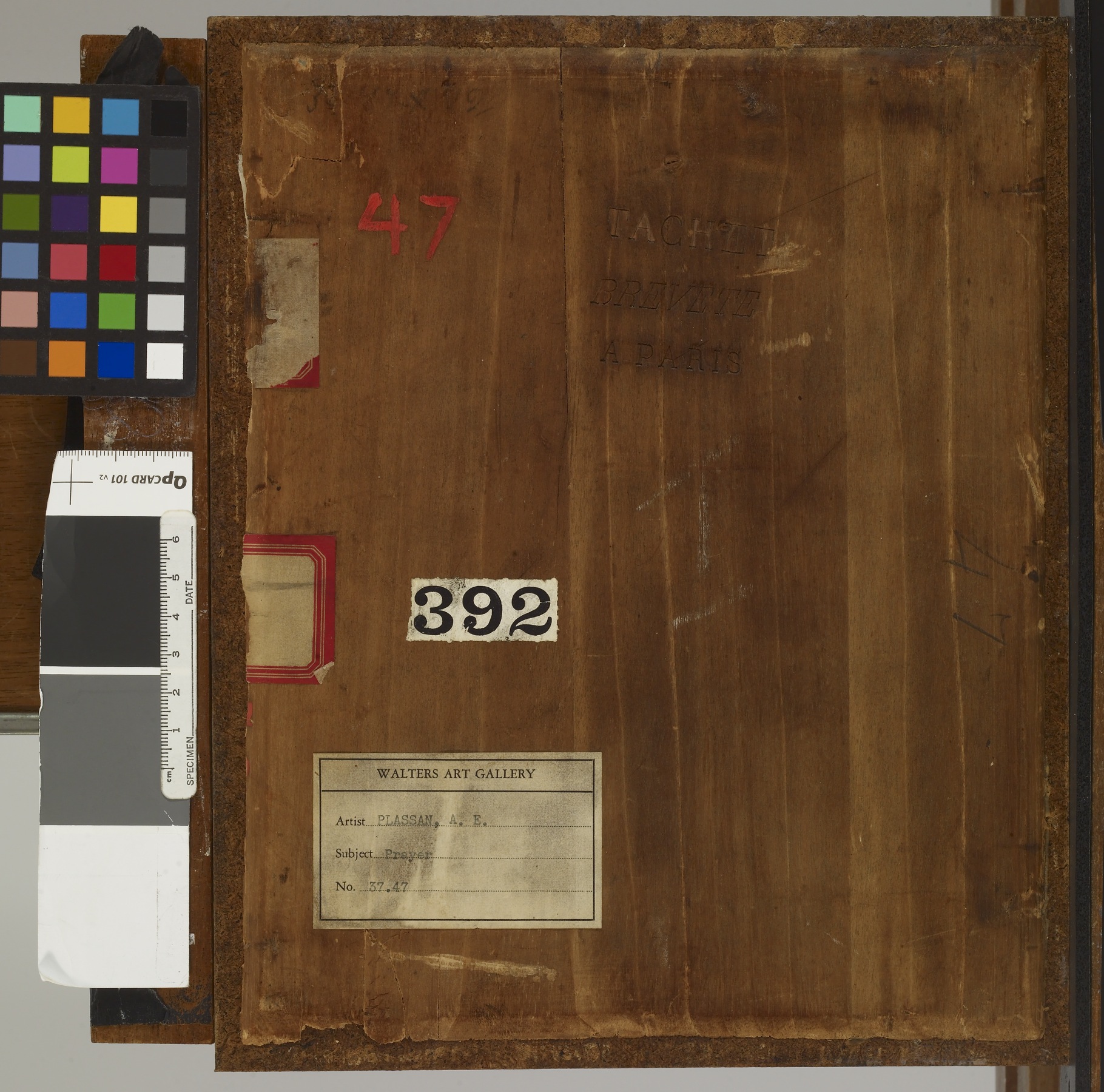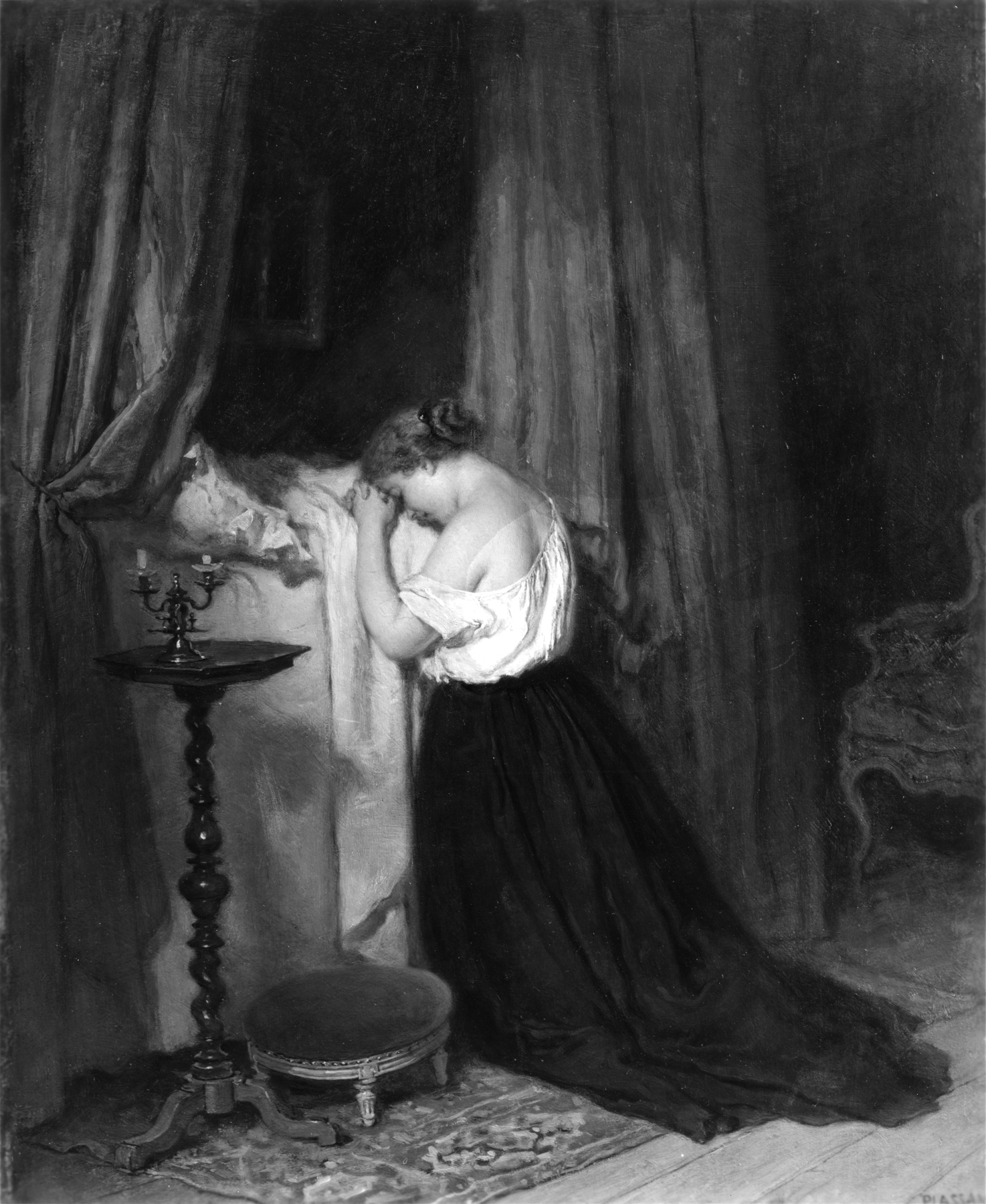Evening Prayer
(18th and 19th Centuries )
A young woman, wearing a white blouse with her shoulders bared and a long black skirt, kneels in prayer beside her bed. The furnishings of this contemporary bourgeois interior include a colorful oriental rug, a turned mahogany candlestand carrying a brass double candleholder, and an upholstered Louis XV-style armchair. Partially concealed by the pink silk bed curtains is a framed crucifix.
Single-figured boudoir scenes, such as this work, were the mainstay of Plassan's oeuvre. A very similar composition, with the same figure and candlestand, entitled "La Prière," was sold at Sotheby's in London, July 21, 1976, no. 45, dated 1862.
Inscription
Provenance
Provenance (from the French provenir, 'to come from/forth') is the chronology of the ownership, custody, or location of a historical object. Learn more about provenance at the Walters.
Commissioned by William T. Walters (through George A. Lucas as agent), Baltimore, December 5, 1863 [1]; inherited by Henry Walters, Baltimore, 1894; by bequest to Walters Art Museum, 1931.
[1] The Diary of George A. Lucas, p. 166.
Exhibitions
| 2014-2016 | From Rye to Raphael: The Walters Story. The Walters Art Museum, Baltimore. |
Conservation
| Date | Description | Narrative |
|---|---|---|
| 3/16/1971 | Examination | examined for condition |
| 12/17/1971 | Treatment | cleaned; coated; other; loss compensation |
Measurements
H: 10 5/8 x W: 8 11/16 in. (27 x 22 cm); Framed H: 20 1/16 × W: 17 15/16 × D: 2 3/4 in. (51 × 45.6 × 7 cm)
Credit Line
Commissioned by William T. Walters, 1863
Location in Museum
Not on view
Accession Number
In libraries, galleries, museums, and archives, an accession number is a unique identifier assigned to each object in the collection.
In libraries, galleries, museums, and archives, an accession number is a unique identifier assigned to each object in the collection.
37.47









